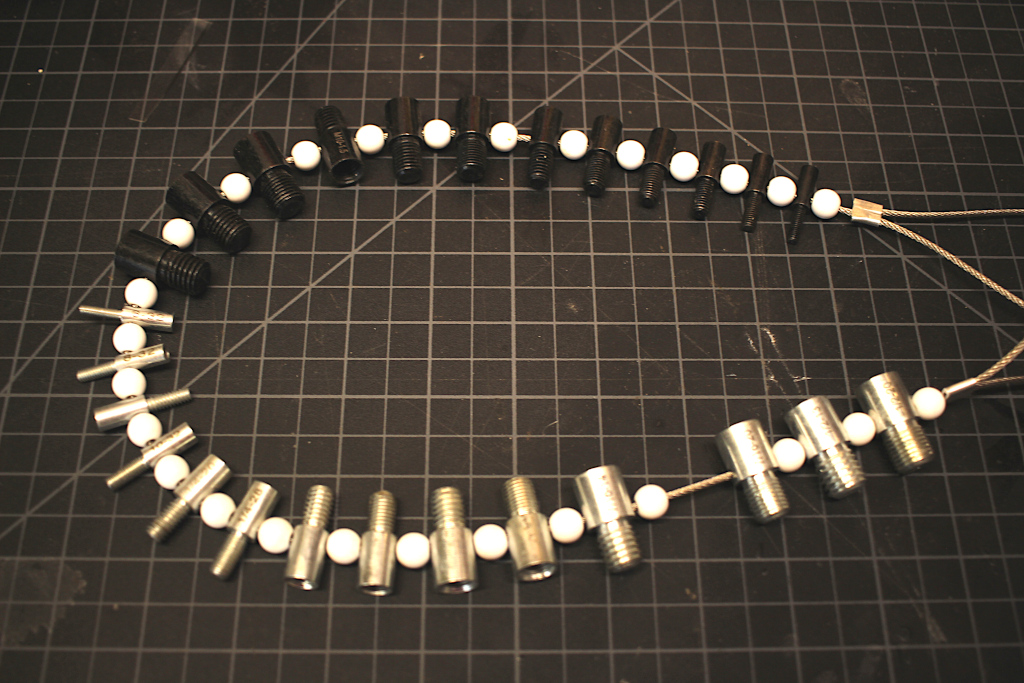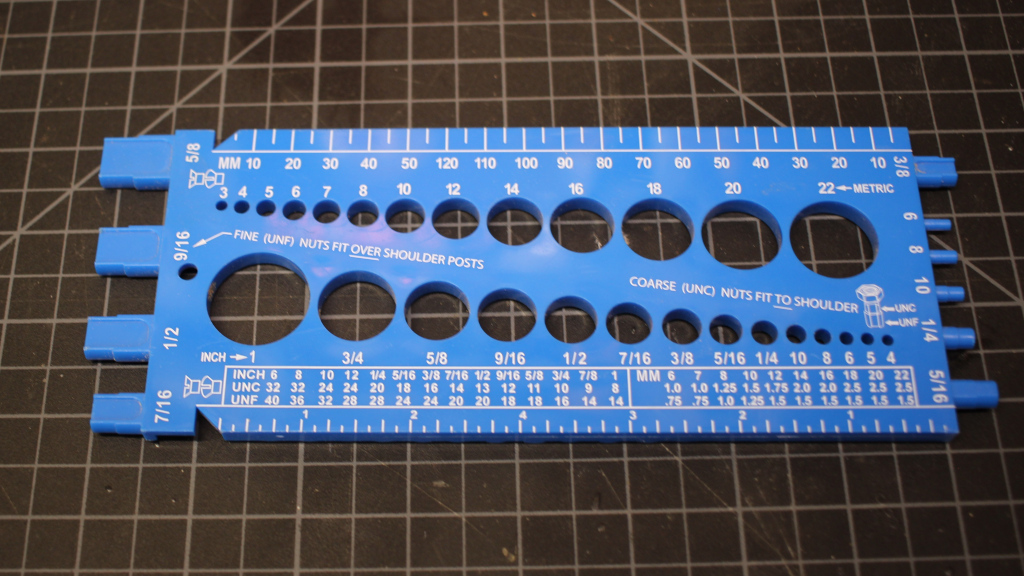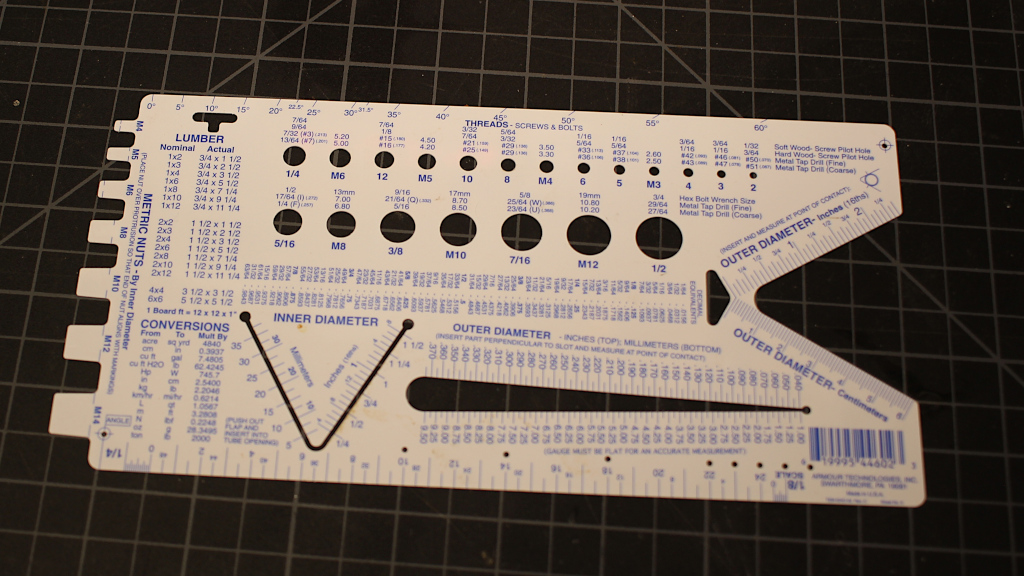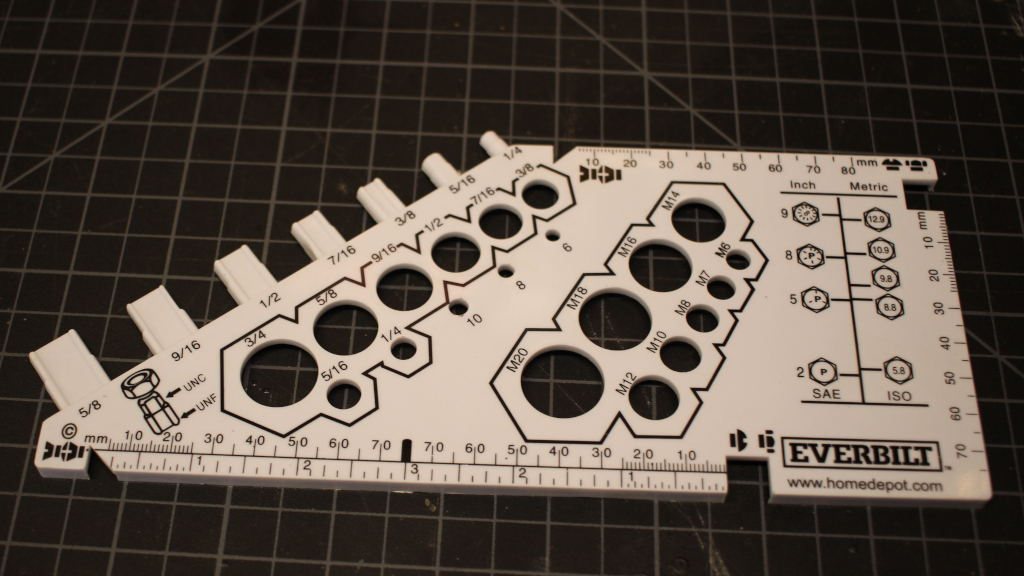Day 39, Gaggle of thread gauges
If there is one thing that I hate, it must be that when I go to the hardware store to purchase a particular size bolt and I end up buying the wrong size of kind. Or maybe when I have a particular bolt on the bench and I wonder what size it is. This has happened enough so that I have invested a tiny amount in getting some little helpers so that I can have a tiny bit more confidence in typing and sizing bolts.
This is perhaps the most versatile: a nut/bolt size checker I got from Amazon
which includes both male and female sizes in both imperial and metric sizes in 24 different sizes.

One slightly interesting feature of this set is that includes the unusual size M7 (which is sometimes used for potentiometers) as well as fine and coarse threads for many of the imperial sizes, as well as helping me debug an issue where I had a combination of both fine and standard thread M8 hardware mixed together. (That was not a fun day.) The only really negative I had with this set is actually also a positive: the gauges are all strung onto steel cable so they don't get lost, but they are also somewhat large and cumbersome. I keep them hung on a hook on my pegboard, but I sometimes wish there was a smaller version with just the common sizes.
A somewhat smaller but still versatile gauge is this one, injection molded from plastic.

This one is kind of a useful gauge too, although I don't find it as nice to use as the first, especially for metric. While the end pegs can be used to size imperial sized nuts, it doesn't include any posts for metric sizess. It also includes rulers (both metric and imperial) on the edges, but they are coarse, measuring to just 1/2 cm and 1/8 inch respectively. One feature it does have which is useful is a convenient hole near the 9/16" peg which you can use to hang it on your pegboard. Having these things handy is essential to their utility, and I think that ability to hang it on the wall is a must for me.
The next one is similar, but has a much expanded collection of useful functions, even if they are packaged in a less sturdy framework, and has a curiously chosen set of capabilities.

While the previous one had pegs to size both metric and imperial nuts, for some reason this one has holes which allow you to size bolts of
either type, but only has pegs to size metric nuts. Not sure what's up with that? It includes a couple of gauges that can be used to determine
sizes of rods either by inner or outer diameter, but frankly I keep a set of cheap dial calipers for that. One thing I do find useful is that
it has a table for pilot hole diameters which I occasionally find useful. It also includes a table of conversion factors between various units,
which I admit I've never used, but when I need to convert acres to square yards, I'm sure I'll be happy to have this.
It also includes a table which shows how large lumber actually is
compared to its nominal size (a very odd thing to include when it only includes a metric nut sizer.)
A positive is that it does have a way to hang it, but frankly it holds it near the corner
which means it hangs crooked on the wall, which seems like an odd thing for someone as slovenly as myself to be annoyed by, but if you are going
to make a tool, you might as well get these details right.
This gauge has kind of the opposite issue as the previous one.
 It includes pegs to size Imperial bolts, but does not include them for metric sizes. One thing I do like is that it is sturdy and includes outlines
for hex heds for all the common sizes as well, which can give you further confirmation that you've sized the bolts properly. one annoyance that I
have with this one is that it lacks a convenient hanging hole, although it does have a crude ruler which I am guessing was intended to be used
as a center finding ruler, although for that I think it is numbered in reverse. There is probably some dedicated use for it that I lack the cleverness
to discern.
It includes pegs to size Imperial bolts, but does not include them for metric sizes. One thing I do like is that it is sturdy and includes outlines
for hex heds for all the common sizes as well, which can give you further confirmation that you've sized the bolts properly. one annoyance that I
have with this one is that it lacks a convenient hanging hole, although it does have a crude ruler which I am guessing was intended to be used
as a center finding ruler, although for that I think it is numbered in reverse. There is probably some dedicated use for it that I lack the cleverness
to discern.
Lastly is something that started my whole thinking about these kind of sizing gauges: a little 3d printed gauge block which can be used to size various machine metric bolts. It is a simple 3D print which I made out of white PLA, and which I colored the embossed lettering on by hand, using a sharpie.

3D printing accurate threads would be a problem, so this thing does not: it just create a recess to place a bolt of each appropriate size into a small hex inset area. I installed M3, M4, M5, and M6 (it include m2.5 and m2 slots, but I didn't have any on hand, and seldom use them.) You can get the model for download on Thingiverse and that includes versions that can be printed on a multimaterial printer. I don't have one of those, but I have thought about doing a filament swap to change colors to a contrasting color on my more conventional printer.
One of the things that I found useful is the bolt sizer which you can use to quickly check a bolt's length. In the picture above is one of those M3 multipacks that includes five different lengths of bolt. Of course I did the most common thing imagineable: I dropped it and mixed them all up. Using this little gadget, I quickly got them sorted and organized back into their trays. If you are playing a lot with metric hardware (say, when making a CNC router) having a gauge like this to double check your hardware could be quite useful.
Happy Tuesday all!